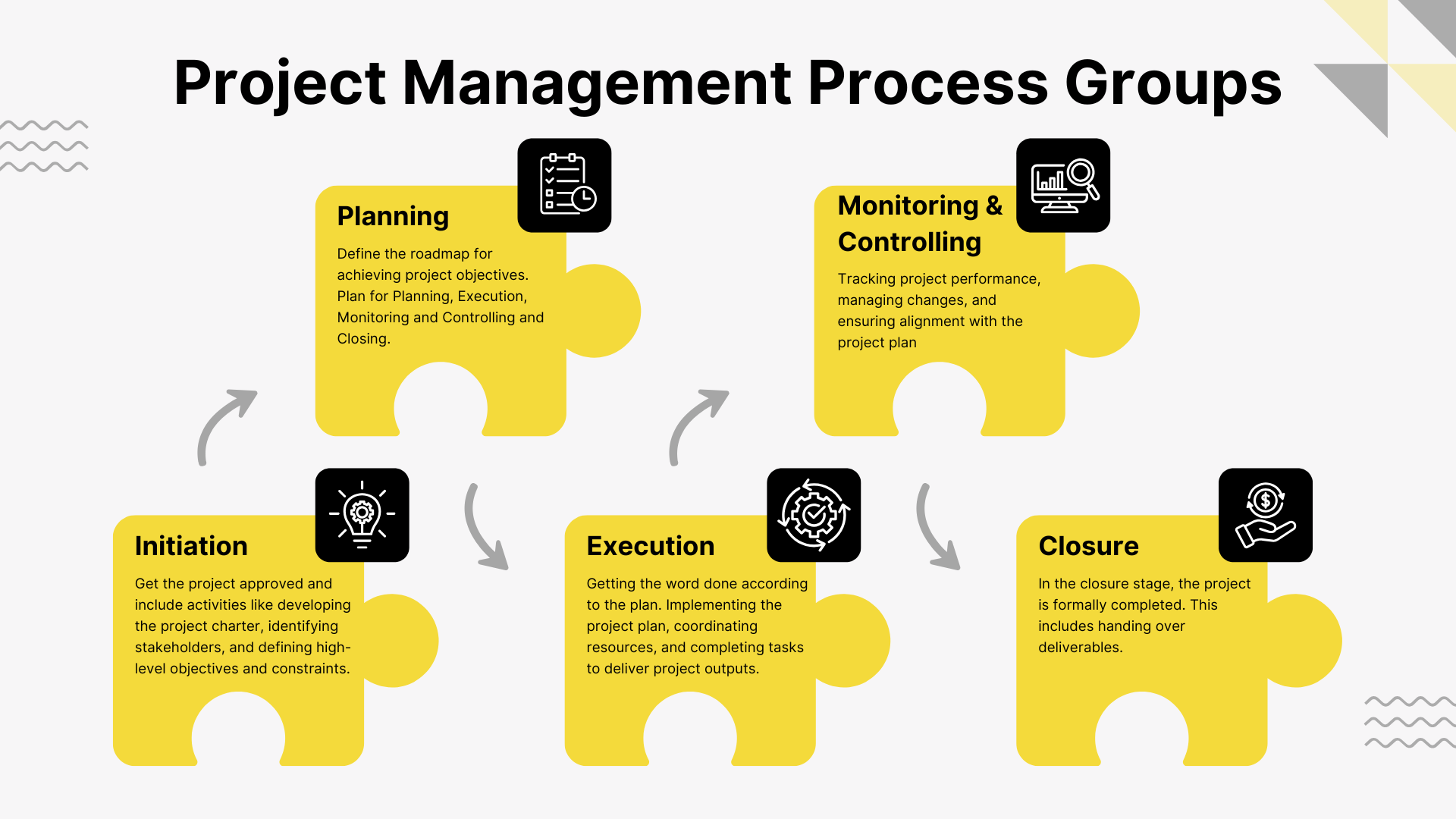
Mastering the Project Management Process: Insights from PMBOK Guide and Rita’s Process Chart
Project management is a structured discipline that requires a clear understanding of processes to ensure project success. The PMBOK Guide and Rita Mulcahy’s Process Chart are two invaluable resources for PMP exam takers and project managers alike. This blog explores the five process groups defined by PMI and how Rita’s Process Chart complements them, offering practical insights for mastering project management.
The Five Process Groups in PMBOK Guide
PMI’s PMBOK Guide outlines five essential process groups that form the backbone of project management:
- Initiating
This phase involves formally authorizing the project and defining its objectives. Key activities include developing the project charter and identifying stakeholders. It sets the foundation for the project’s success. - Planning
The planning phase is where the roadmap for achieving project objectives is created. It includes developing the project management plan and subsidiary plans, such as scope, schedule, cost, and risk management plans. This phase ensures all aspects of the project are thoroughly planned. - Executing
Execution involves implementing the project plan, coordinating resources, and completing tasks to deliver project outputs. It is the phase where the majority of the project’s work is performed. - Monitoring and Controlling
This phase spans the entire project lifecycle, ensuring that performance aligns with the plan. It involves tracking progress, managing changes, and addressing risks to keep the project on track. If the project is far off the baselines as per the project plan, the project may trace back into Initiating phase. - Closing
The closing phase formalizes the completion of the project. Deliverables are handed over, contracts are finalized, and lessons learned are documented.
Rita’s Process Chart: A Practical Tool
Rita Mulcahy’s Process Chart is a visual representation that helps project managers understand the sequence and interrelation of activities within the process groups. You can access the process chart here – RPC-Process-Cats.pdf. It emphasizes the importance of knowing “where you are” in the project management process and provides clarity on the actions required at each stage.
Key Features of Rita’s Process Chart:
- Structured Order in Planning: Rita’s chart highlights the logical sequence of planning activities, ensuring that each step builds on the previous one.
- Integration Across Process Groups: It demonstrates how activities in one process group influence others, fostering a holistic approach to project management.
- Focus on Outputs: The chart emphasizes the deliverables and outputs associated with each process group, helping project managers stay goal oriented.
While the PMBOK Guide provides a theoretical framework, Rita’s Process Chart offers a practical perspective. For example:
- In the Planning phase, Rita’s chart outlines the order of activities, such as defining scope, creating the WBS, and developing the schedule, ensuring logical progression.
- In the Monitoring and Controlling phase, the chart emphasizes continuous improvement and progressive elaboration, aligning with PMI’s focus on adaptability.
Together, these resources equip project managers with the tools and knowledge to navigate complex projects effectively.
Tips for PMP Exam Takers
- Understand the Process Groups: Memorize the five process groups and their key activities. Rita’s chart can help you visualize the flow of processes.
- Focus on Outputs: Pay attention to the deliverables associated with each process group, as exam questions often test your understanding of outputs.
- Leverage Rita’s Chart: Use the chart to understand the sequence of planning activities and how they relate to other process groups.
Be sure to check out the following posts if you are prepping for your exam:
- Project Management Framework – 5 Essential Concepts for PMP
- Master Key PM Framework Concepts for PMP Exam Success
- 10 Tips to Outsmart PMI’s PMP Exam Strategies
